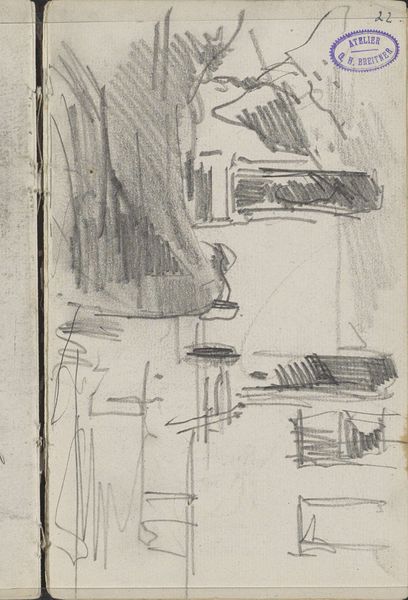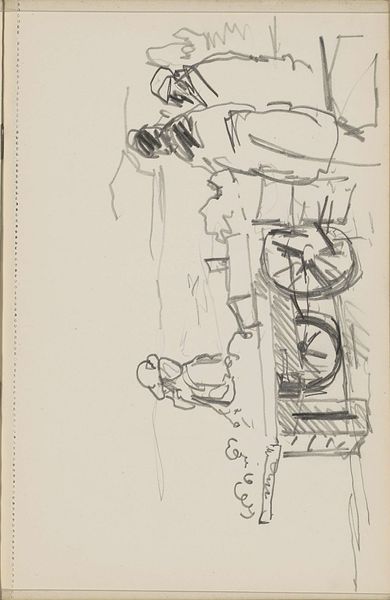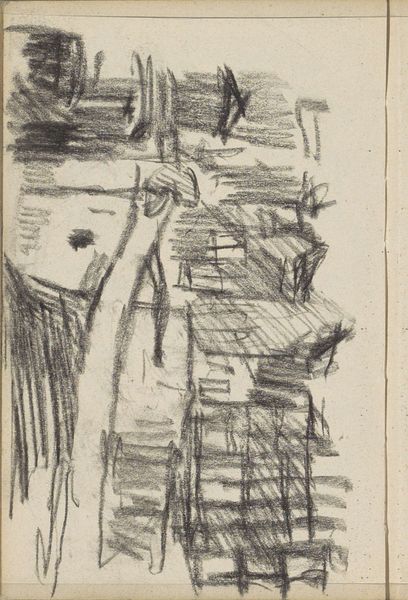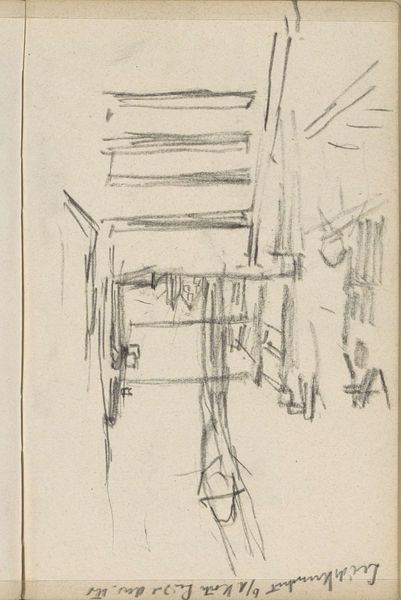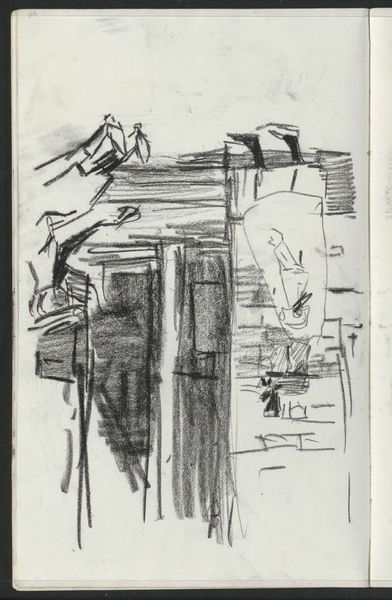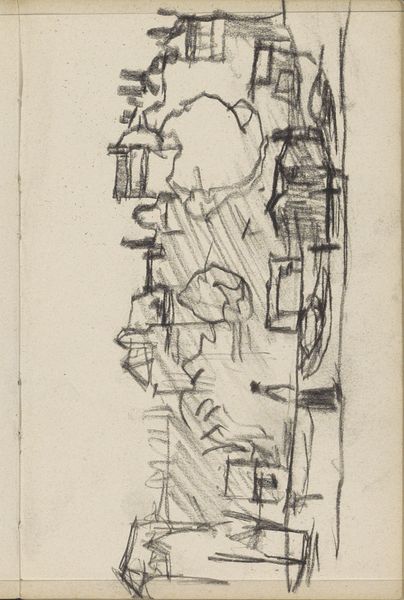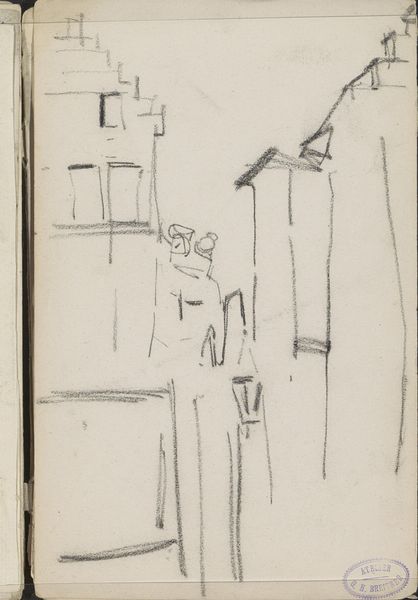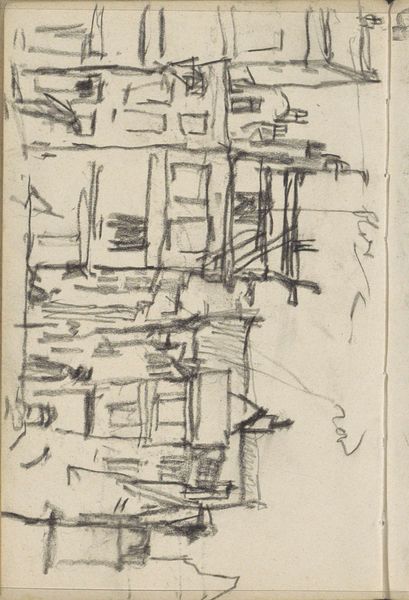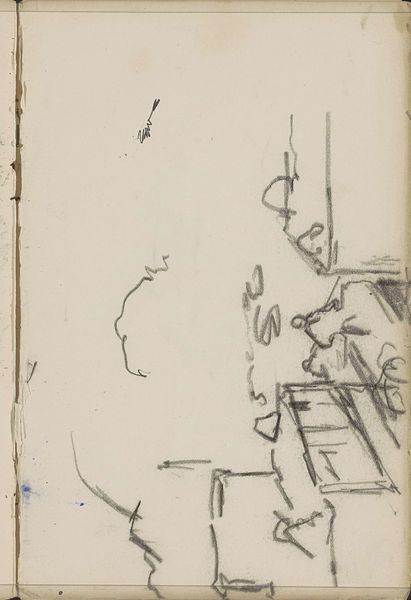
drawing, pencil
#
drawing
#
impressionism
#
pen sketch
#
landscape
#
personal sketchbook
#
idea generation sketch
#
sketchwork
#
ink drawing experimentation
#
pen-ink sketch
#
pencil
#
sketchbook drawing
#
storyboard and sketchbook work
#
sketchbook art
#
initial sketch
Copyright: Rijks Museum: Open Domain
Curator: Good morning, let’s discuss this intriguing sketchbook page by George Hendrik Breitner titled "Cart Before a Building, Possibly a Barn," created between 1887 and 1889. Editor: My initial response is one of curiosity—the looseness of the sketch suggests immediacy and a fleeting moment captured. There is an intentional ambiguity here. Curator: Indeed, the very open handling, visible in the scribbled shading, and the rapid execution indicate the artwork's provisional nature, yet the structural forms, visible lines denoting spatial relations, adhere to rigorous, representational demands. We need to ask if we can relate that to Breitner's approach at the time. Editor: Absolutely. Breitner's process is central here, especially when considering this as a sketchbook piece. The labor involved is not just artistic creation, but of observing and recording a specific reality—what materials were at hand? What was the physical environment like when he produced the work? What social observations shaped the urgency to create a likeness, if it all? Curator: Those considerations inevitably tie into the aesthetic composition. For instance, note how the composition—while unfinished—nonetheless divides the picture plane into clear sections through a combination of bold and extremely light marks. Editor: True. Breitner makes no effort to idealize anything. His barn becomes something mundane to see at the edge of the urban sprawl. It's as if he uses the paper's material properties to convey the very provisionality of modern life in Amsterdam in those years, including its material poverty. Curator: That perspective aligns well with his artistic circle at the time. Even here in an apparent preparatory sketch, he emphasizes capturing a specific feeling or impression. Editor: Which is what makes the sketch so compelling. I keep coming back to how this isn't merely representational but actively explores what it meant to witness change during industrialization and growing consumerism—using the humblest tools available, a sketchbook, pencil, and ink. Curator: Considering Breitner's own words on art’s importance, to show “the atmosphere of the street,” even a sketch like this captures his core objective, both structurally and aesthetically. Editor: Precisely. Thank you; I find myself appreciating the interplay between intention and process on the page, bringing new understanding of daily realities embedded here.
Comments
No comments
Be the first to comment and join the conversation on the ultimate creative platform.
